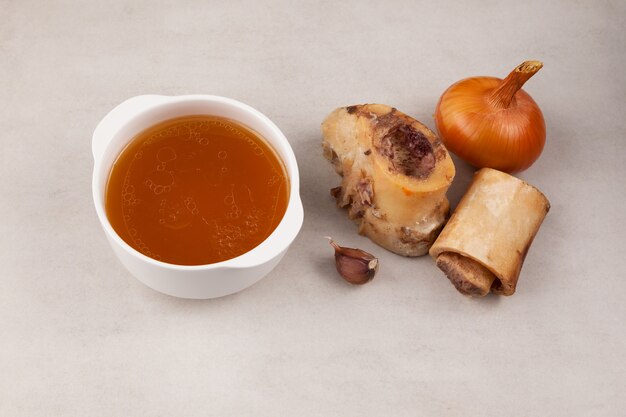Making a flavorful broth at home is a great way to reduce food waste and create a versatile base for soups, stews, and sauces. Instead of throwing out food scraps, consider using them to enhance the depth and richness of your broths. Here’s a guide to common kitchen scraps that can take your broth from bland to bold.
1. Vegetable Peels and Ends
- Carrot Peels and Tops: Add sweetness and a hint of earthiness to your broth.
- Onion Skins and Ends: Contribute a rich, golden color and a savory base flavor.
- Celery Tops and Leaves: Enhance the aroma and provide a fresh, herbal note.
These scraps are staples in most broths and can be stored in a freezer bag until you’re ready to use them.
2. Herb Stems
- Parsley, Cilantro, and Dill Stems: Add a fresh, green flavor to broths without overpowering them.
- Thyme and Rosemary Stems: Infuse subtle woody and aromatic notes into the liquid.
Instead of tossing herb stems, tie them into a bundle for easy removal after simmering.
3. Garlic and Ginger Scraps
- Garlic Skins and Cloves: Impart a mellow, roasted flavor.
- Ginger Peels and Knobs: Add warmth and a slightly spicy, fragrant undertone.
These scraps work especially well for Asian-inspired broths and soups.
4. Cheese Rinds
- Parmesan Rinds: A secret ingredient in Italian broths, cheese rinds add a savory, umami richness. Drop them into the pot during simmering and remove before serving.
5. Meat Bones and Scraps
- Chicken Bones and Skin: Provide a gelatinous, rich texture to your broth. Roast them first for a deeper flavor.
- Beef and Pork Bones: Perfect for hearty, full-bodied broths. Use marrow bones for extra richness.
- Fish Heads and Frames: Ideal for light, delicate seafood broths.
Meat scraps can be stored in the freezer until you’re ready to make broth.
6. Mushroom Stems
- Button, Shiitake, or Portobello Stems: Packed with umami, mushroom stems add depth to broths, especially vegetarian ones. Dried mushrooms also work well for an extra flavor boost.
7. Corn Cobs
After cutting the kernels off, don’t discard the cobs. They add a natural sweetness to broths and pair beautifully with vegetables like leeks and potatoes.
8. Tomato Trimmings
Tomato cores and skins can add a subtle acidity and a touch of color to your broth, enhancing its complexity.
9. Apple and Citrus Peels
- Apple Cores and Peels: Add a hint of sweetness to balance savory flavors.
- Lemon and Orange Peels: Offer a bright, zesty note, especially for seafood or chicken broths.
Use these sparingly to avoid overpowering the broth.
10. Stale Bread
Stale bread might seem like an odd addition, but it can lend body and a subtle, toasty flavor to broths, particularly in Mediterranean-style recipes.
Tips for Using Food Scraps in Broths
- Store Scraps Properly: Keep a container or bag in your freezer to collect scraps over time. This ensures you have enough for a flavorful broth.
- Avoid Bitter Scraps: Stay away from overly bitter items like broccoli stems, cabbage cores, or too many citrus peels. These can overpower the broth.
- Roast for Extra Flavor: Roasting bones and vegetables before adding them to your pot will enhance their flavors.
- Simmer Low and Slow: Allow your broth to simmer gently for at least 1–2 hours to extract maximum flavor.
Food scraps aren’t just waste—they’re flavor gold. By repurposing them in broths, you not only create delicious, nutrient-rich bases for meals but also reduce your kitchen waste. Experiment with different combinations to find your perfect broth and enjoy the rewards of sustainable cooking.








